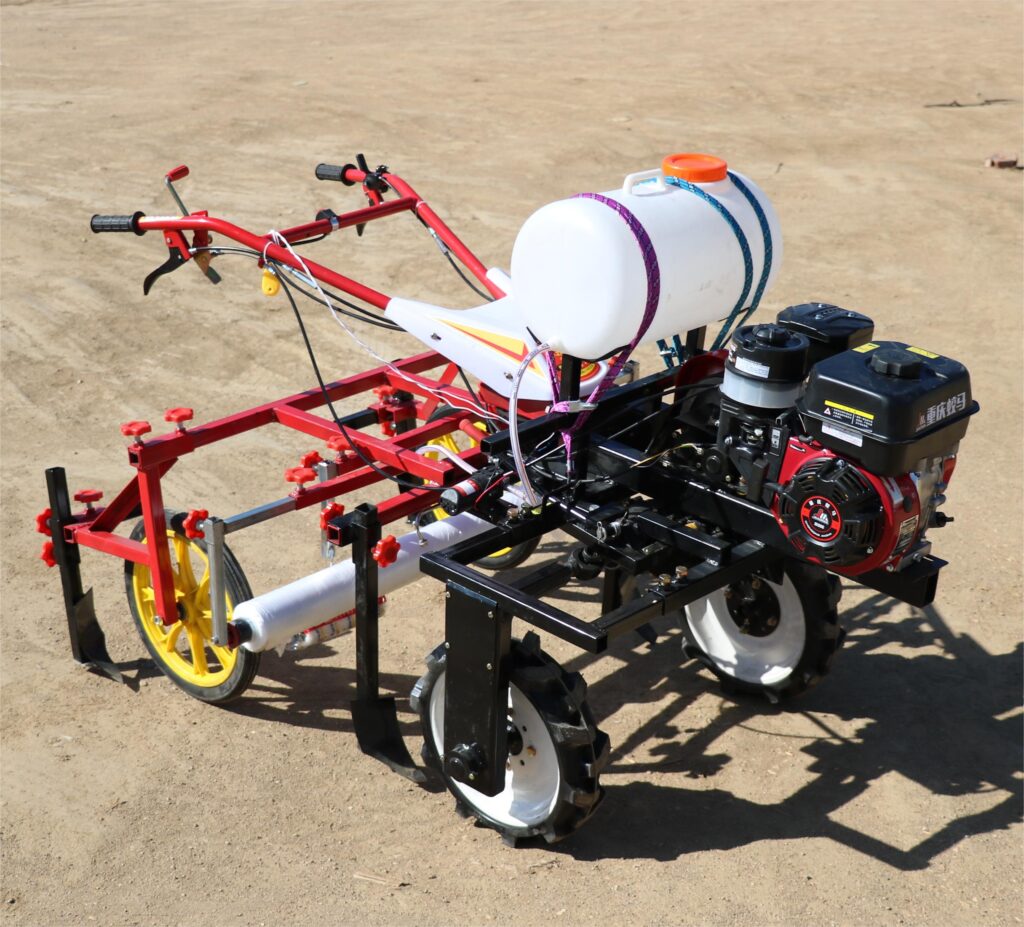
Agricultural machinery: Introduction to the functions and usage scenarios of fully automatic land covering machines
- introduce

In an evolving agricultural landscape, the incorporation of advanced technologies is reshaping traditional agricultural practices. Fully automated land cover machines are at the forefront of this transformation, providing a revolutionary approach to soil management. This comprehensive guide explores the capabilities of these automated machines, their use, applicable scenarios, and the many benefits these automated agricultural equipment bring to modern agriculture.
Learn about fully automatic land covering machines:
Fully automatic land covering machines are innovative agricultural machines designed to automate the process of covering soil with protective materials such as plastic film or agricultural fabric. These machines simplify the labor-intensive task of covering large tracts of land manually, providing efficiency and precision for a variety of agricultural applications.
Functions of fully automatic land covering machine:
Automated material handling:
The main function of these machines is to automatically process covering materials. They efficiently supply, position and deploy materials within designated land areas, eliminating the need for human intervention and reducing labor requirements.
Precise land coverage:
The fully automatic land covering machine has excellent accuracy. They ensure even and accurate distribution of covering material, optimizing coverage and minimizing waste. This precision contributes to effective soil protection and enhanced crop management.
Adjustable speed and coverage:
These machines often come with adjustable settings that allow farmers to control speed and coverage. This adaptability ensures the machine can meet the specific needs of different crops, soil types or seasonal requirements.
Real-time monitoring and control:
The advanced model incorporates a real-time monitoring system that enables farmers to track the progress of their land cover operations. Operators can instantly adjust settings or resolve issues promptly, ensuring optimal performance.
Weather adaptability:
Fully automatic land covering machines are designed to operate in a variety of weather conditions. Whether protecting crops from frost, regulating soil temperature or retaining moisture, these machines can adapt to the various challenges posed by different climates.
Introduction to use:
Land preparation:
Before using the fully automatic land covering machine, make sure the land is properly prepared. Clear areas of debris, rocks or obstructions that may impede the machine’s progress and ensure the mulching process goes smoothly.
Material loading:
Loads designated cover material onto the machine’s feed system. Whether it’s plastic film, agricultural fabric or other protective materials, the machine’s automated system handles the loading process efficiently.
Adjust settings:
Adjust machine settings to the specific requirements of your land and crops. This may include setting speed, coverage area, and any other parameters that fit the farmer’s preferences or the unique needs of the farming operation.
Start the land cover process:
After loading material and adjusting settings, start the fully automated land cover process. The machine moves autonomously on land, deploying mulching material with precision and efficiency.
Monitor and intervene:
Operators can monitor the machine’s performance throughout the land-covering process. Real-time monitoring systems can intervene immediately if any issues arise, ensuring seamless and efficient operations.
Check after coverage:
Once the land covering process is complete, inspect the covered area to ensure even coverage and address any potential issues. This step ensures that the land is fully protected and prepared for optimal crop growth.
Introduction to use:
Land preparation:
Before using the fully automatic land covering machine, make sure the land is properly prepared. Clear areas of debris, rocks or obstructions that may impede the machine’s progress and ensure the mulching process goes smoothly.
Material loading:
Loads designated cover material onto the machine’s feed system. Whether it’s plastic film, agricultural fabric or other protective materials, the machine’s automated system handles the loading process efficiently.
Adjust settings:
Adjust machine settings to the specific requirements of your land and crops. This may include setting speed, coverage area, and any other parameters that fit the farmer’s preferences or the unique needs of the farming operation.
Start the land cover process:
After loading material and adjusting settings, start the fully automated land cover process. The machine moves autonomously on land, deploying mulching material with precision and efficiency.
Monitor and intervene:
Operators can monitor the machine’s performance throughout the land-covering process. Real-time monitoring systems can intervene immediately if any issues arise, ensuring seamless and efficient operations.
Check after coverage:
Once the land covering process is complete, inspect the covered area to ensure even coverage and address any potential issues. This step ensures that the land is fully protected and prepared for optimal crop growth.
Benefits of use:
Save labor:
Perhaps one of the most significant benefits is reduced labor requirements. Fully automatic land mulching machines eliminate the need for manual mulching, allowing farmers to allocate their labor to more skilled and strategic tasks.
Time efficiency:
Automation translates into time efficiency. These machines cover large areas quickly and accurately, ensuring the land is protected in a timely manner. This is crucial, especially in time-sensitive agricultural operations.
Improve accuracy:
The precision provided by these machines helps improve land cover results. The even distribution of mulching material enhances soil protection and provides an optimal environment for crop growth.
Adaptability to various materials:
Fully automatic land mulching machines can be used with a variety of mulching materials, providing farmers with flexibility based on their specific needs and the requirements of different crops or environmental conditions.


